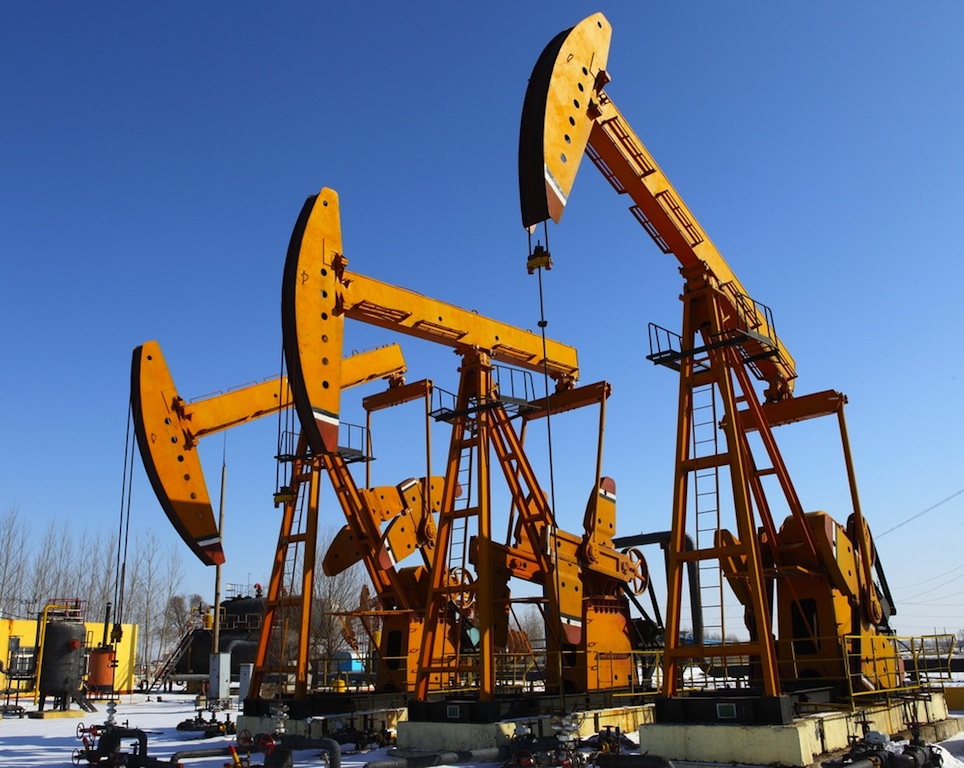Kazakhstan optimistic about its economy in crisis-hit world

By Aynur Karimova
Kazakh President Nursultan Nazarbayev says he is optimistic about economic and financial situation of his country in the crisis-hit regional and world markets.
Speaking at a meeting dedicated to social-economic development of Kazakhstan, Nazarbayev said his country enjoys all necessary reserves to overcome the difficult trends.
“Despite all difficulties, we passed 2014 with a growth of 4.3 percent. I think this is a good indicator in such a situation. It is important to take the situation in Russia and Europe into consideration. The decrease of the population’s incomes and the strengthening of social tensions in neighboring countries may also affect us. We should not allow these trends unfold,” he noted.
Current negative trends in the global economy are the consequences of the global financial and economic crisis of 2007-2009.
The occurrence of the crisis was the fall of prices for export commodities of Kazakhstan, particularly oil, the cost of which fell below $50 a barrel in half a year. Prices of products of non-ferrous and ferrous metals were also reduced, which also provided the inflow of funds to the state budget. The situation in Ukraine and the sanctions imposed against Russia, and the current situation of the Russian ruble have also affected the situation in the country.
Kazakhstan has predicted such development of situation and the government has developed relevant measures to overcome the negative effects.
“The ‘Nurly Jol’ program is aimed at ensuring the infrastructural development of the country, and creating new working places which will have a multiplier effect for whole economy. At the same time, some 75 facilities should be commissioned as part of the industrial-innovative program, which will create 7,500 new working places,” Nazarbayev stressed.
However, experts are not so optimistic about the development of situation as Nazarbayev. They believe that Kazakhstan’s oil production is likely to decrease given the oil price decline in the world oil market.
Oil production figures also approve such a hypothesis. The country’s statistics show that Kazakhstan decreased oil and gas condensate production by 1.2 percent in January – December 2014 compared to the same period of 2013. The country produced 67.927 million metric tons of oil in the reporting period (2.2 percent decrease).
Decline of world oil price will force many oil production companies operating in Kazakhstan to revise their production and investment plans.
If the average cost of oil in Kazakhstan reaches $50 per barrel, the profit of oil companies would be the least. In such case, the companies will revise their budgets and will likely reduce them.
In such a scenario, when world oil price decreases to $47 per barrel, and this situation is not expected to change in the coming two years, small oil production companies would go bankrupt and stop their operation in Kazakhstan.
However, there is one way-out from such a pessimistic situation. U.S. Energy Information Administration said in its recently published Country Analysis Brief report that the key to continued growth in liquids production in Kazakhstan is the development of its giant Tengiz, Karachaganak, and Kashagan fields.
“Kazakhstan's future as a producer of petroleum liquids depends on the development and expansion of its three largest projects: Karachaganak, Kashagan, and Tengiz,” the report said.
According to the Oil & Gas Journal, Kazakhstan had proved crude oil reserves of 30 billion barrels as of January 2014—the second largest endowment in Eurasia after Russia, and the twelfth largest in the world, just behind the U.S.
Kazakhstan's two largest projects, Tengiz and Karachaganak, accounted for 48 percent of the country's production in the first nine months of 2014. A third large project, Kashagan, is due to start production in 2016 or 2017, with the combined output of all three projects likely to account for more than half of Kazakhstan's total production going forward.
The country's estimated total petroleum and other liquids production amounted to 1.7 million barrels per day in 2014. Kazakhstan is landlocked and is far from international oil markets. Lack of access to the open ocean makes the country dependent mainly on pipelines to transport its hydrocarbons to world markets. EIA believes development of additional export capacity will also be necessary for production growth of the country.
Aynur Karimova is AzerNews’ staff journalist, follow her on
Twitter: @Aynur_Karimova
Follow us on Twitter @AzerNewsAz
Here we are to serve you with news right now. It does not cost much, but worth your attention.
Choose to support open, independent, quality journalism and subscribe on a monthly basis.
By subscribing to our online newspaper, you can have full digital access to all news, analysis, and much more.
You can also follow AzerNEWS on Twitter @AzerNewsAz or Facebook @AzerNewsNewspaper
Thank you!
